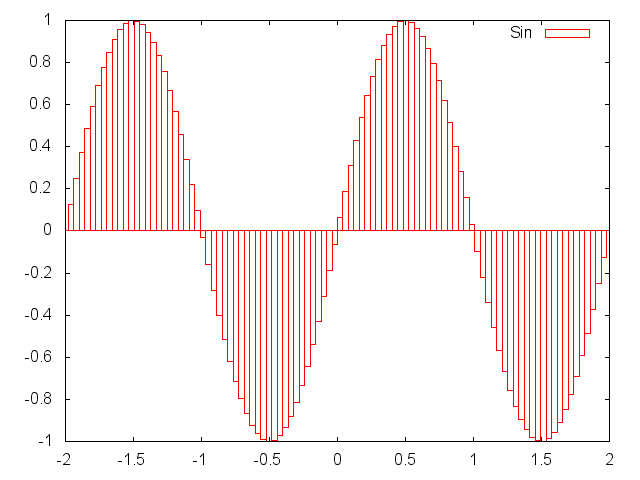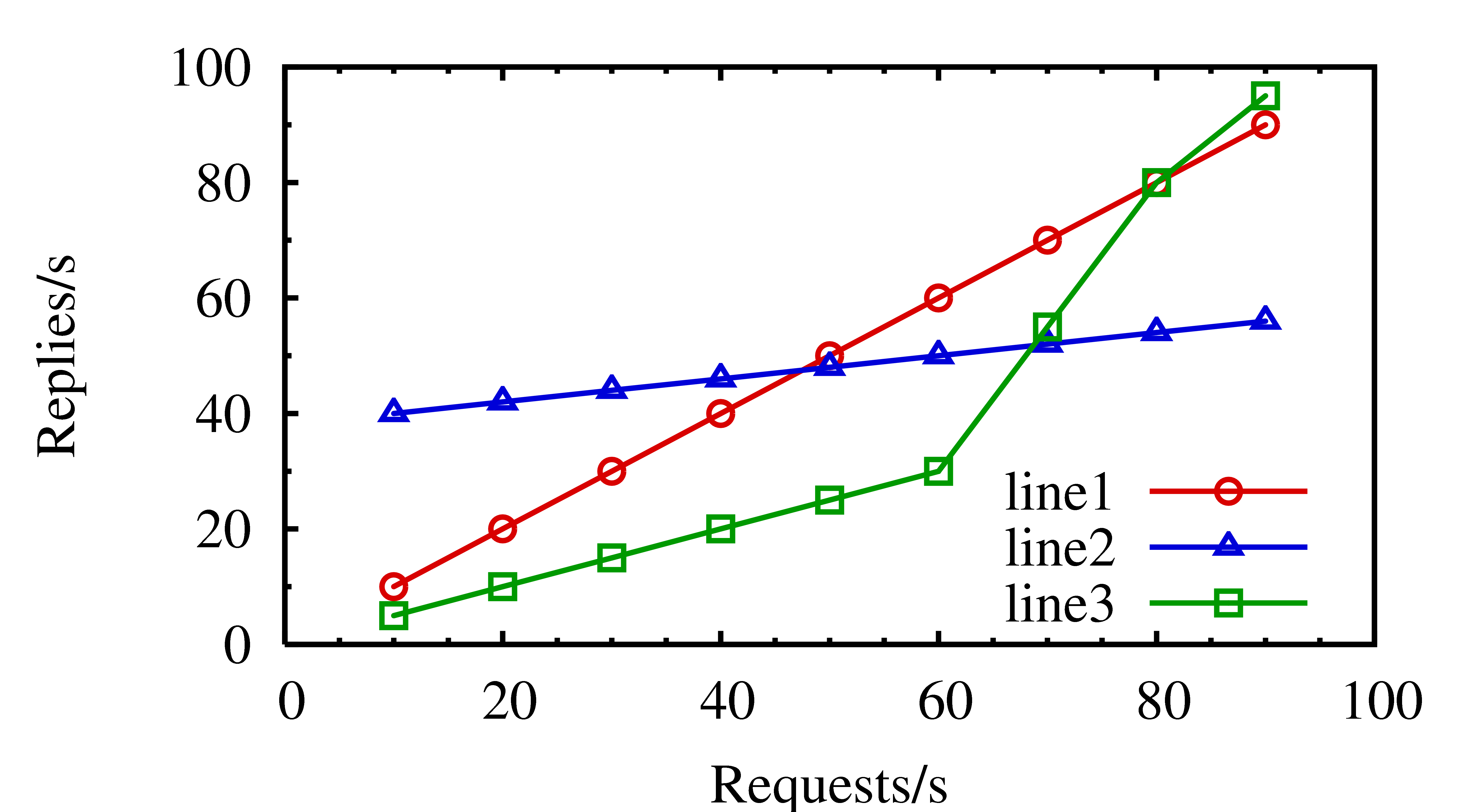

How to show multiple graphs in the output: Plot sin(x) title 'Sine Function', tan(x) title 'Tangent' Plot '4col.csv' u 1:2 w l title 'Square', '4col.csv' u 1:3 w l title 'Double' Plot '4col.csv' using 1:2 with lines title 'Square', '4col.csv' using 1:3 with lines title 'Double' The second command shown creates this chart: Plot '4col.csv' using 1:2 with lines, '4col.csv' using 1:3 with lines, '4col.csv' using 1:4 with lines Plot '4col.csv' using 1:2 with lines, '4col.csv' using 1:3 with lines To show multiple curves on one plot, use the 4col.csv file: You can adorn your plots with titles, labels, legend, arrows, and more: Plot '2col.csv' u 1:2 w l title 'Squared' # 'u' - using, 'w l' - with lines Plot '2col.dat' using 2:1 # 2=x, 1=y (reverse the graph) Plot '2col.dat' using 1:2 # 1=x, 2=y (this is the default) Plot '2col.dat' with lines title 'my curve' # this is really the line-title in the legend Plot '2col.dat' with linespoints # plot only elements 3 thru 7 Plot '2col.dat' with linespoints # plot the first 5 elements Plot '2col.dat' with points # just points (default) Plot '2col.dat' with linespoints # line and points Plot '2col.dat' with lines # connect points with a line Plot '2col.dat' # assumes col1=x, col2=y shows '+' at data points
Gnuplot lines mac os#
Opens plot in an ’AquaTerm’ on Mac OS Xįrom here you can do all sorts of fun things:.


Assumes col1=x, col2=y shows ’+’ at data points.Plotting the data from a two-column file is easy: It prompts you with gnuplot> as shown, but I won’t show that prompt in the examples below. The latest version of Gnuplot works with both formats without requiring you to specify a column-separator. Note that the columns in the first file are separated by whitespace, and the columns in the second file are separated by commas (a CSV file). The examples below use the following 2-column and 4-column data files: You can find more information about the need for this new brew command at this SO link. Please select a terminal with 'set terminal'. WARNING: Plotting with an 'unknown' terminal. You’ll know that you need that command if you get this error message when you try to run a plot command inside the gnuplot command line: Note that with OS X Yosemite (10.10.x) I had to use this brew command instead:

Gnuplot lines mac os x#
To get started, you can use MacPorts or Homebrew to install Gnuplot on Mac OS X systems: If you haven’t used it before, it’s an amazing tool for creating graphs and charts. '' u 1:2 w i lt 0 lw 0.I needed to use Gnuplot a little bit over the last few days, mostly to create 2D line charts, and these are my brief notes on how to get started with Gnuplot. Well, we have cleared the first barrier, but what if we wanted to place the numbers where the data points are? This is quite simple: we only have to plot the file twice more, this time with xticlabel and yticlabel. If in doubt, look up the section on how to plot a martix with bars We have discussed this a couple of times. Of course, we have to call a dummy plot beforehand. Now, it might happen that you don't know the xrange and yrange, in which case you can use the variables GPVAL_X_MIN, GPVAL_X_MAX, GPVAL_Y_MIN, GPVAL_Y_MAX to specify the plot. Then the horizontal lines will be drawn between 0 and 40, while the vertical ones between 0 and 7. I should add here that we can draw a "full" grid based on the data values. This is necessary, because, when left alone, gnuplot assigns a new line type to each new plot. Again, we specify the line type, width, and colour, so that it conforms with the previous one. The second plot draws the vertical lines, plotting our data with impulses. We also specify the line type, 0, which will be dashed, the line width, and the line colour. The first plot calls our data file, and draws the errors that span from x=0 to x=x_data. This is what happens in the first plotting line, after we set up the figure. In this case, this something else is the error bar, in particular, the xerror bar. The horizontal ones are not that trivial, but take only one line of code: the idea is that we trick gnuplot into drawing the horizontal lines by something else. '' u 1:2 w i lt 0 lw 0.5 lc rgb "#ff0000", \ĭrawing the vertical lines is easy, for there is a plotting style in gnuplot, impulse, which does just that. The data file, helpergrid.dat, contains only a couple of lines,


 0 kommentar(er)
0 kommentar(er)
